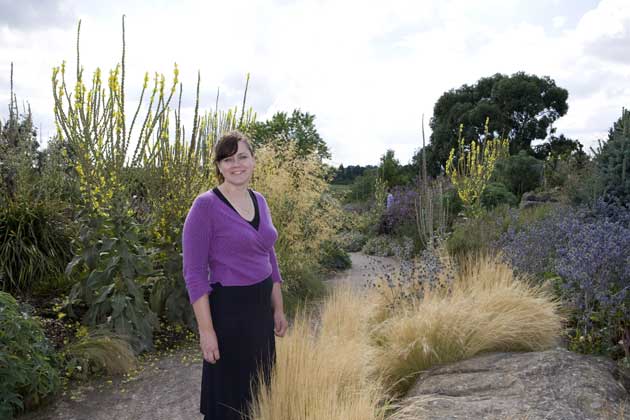School of hard rocks: Turning a load of old builders' rubble into a unique 'dry garden'

The pile of builder's rubble occupying my friend Nina's front garden turns out to be even larger than she made it sound on the phone. "Wow," I find myself saying inanely, "that really is a lot of rubble."
Dealing with building rubble is a perennial gardening problem: it might be the result of your own recent developments; it could be vintage hardcore rubble packed around an Andersen shelter during the 1940s. Either way, you have a lot of rubbish sitting on your top soil that means you can't actually plant anything.
Or does it? You could, of course, hire a nice person to come and put it into rubble bags and load it into a skip. But you could also make the most of what's there and liberate yourself from the tyranny of the hosepipe by creating a "dry garden". Mediterranean-climate plants, evergreen, smart and fragrant, need little water and cope happily with the sharp drainage caused by rubble. The dry approach is particularly good for front gardens where the hose has to be trailed through the house every time you want to water.
To persuade Nina, we set off in the car for RHS Hyde Hall in Essex, where there's a twisty-turny dry garden against the shade of eucalyptus trees that looks persuasively lovely all summer long.
I am also armed with Thames & Hudson's new The Dry Gardening Handbook by Olivier Filippi (£29.95); and by junction 21a of the M25 Nina has already fallen in love with a photo of deep purple lavenders flowering with the delicate yellow heads of Achillea clypeolata.
When we get to Hyde Hall, she wants everything there as well. Verbascums sit on the skyline, yellow punctuation points to the enormous Essex horizon, and blue sea hollies such as Eryngium planum make an electric contrast.
We buy an up-to-date plant list for £1 from the visitor centre and spend two hours wandering around taking notes, cross-referencing to Filippi's excellent book, which is almost completely focused on plants (he's particularly good on varieties of lavender).
We pick out a Caryopteris that adds a pale blue-grey tone to the mix and the three-foot tall wheaten sheaves of Stipa tenuissima (see box, right)
For Nina's garden, about half the rubble still had to go to the tip, but half stayed. There was a lot of sand, which we forked into the soil, and bits of brick, which also got dug in. The larger bits of concrete, easy to pick out, went in plastic rubble bags from the local builder's merchants.
By the time we'd finished, it looked a right mess. However, we finished off with the fun part: the whole lot covered with a gravel mulch, giving the perfect finish.
Home and dry: Mediterranean lovelies
'Caryopteris x clandonensis'
Soft-feathered flowers in piercing lilac-blue (right) with grey foliage, "Heavenly Blue" is much-loved by butterflies. Flowering now and into autumn. £6.45 from www.crocus.co.uk
'Achillea clypeolata'
Species Achillea with softer, more open growth than the intense garden hybrids, and a more searching, wilder yellow. £4.95, www.rumsey-gardens.co.uk
'Stipa tenuissima'
Many people's favourite garden grass, with a strong, pale fountain silhouette that moves in the slightest wind. £5.95 from www.crocus.co.uk
'Eryngium pandanifolium'
A pale-green sea holly that grows to giant proportions, with leaves that look more like an agave. £8.50 from www.mailorder.crug-farm.co.uk
Subscribe to Independent Premium to bookmark this article
Want to bookmark your favourite articles and stories to read or reference later? Start your Independent Premium subscription today.

Join our commenting forum
Join thought-provoking conversations, follow other Independent readers and see their replies